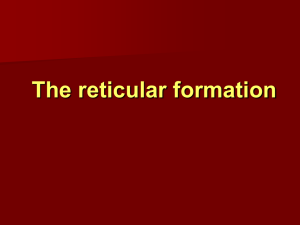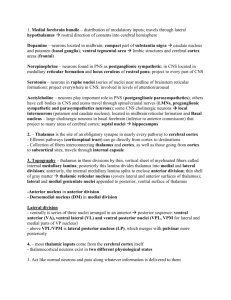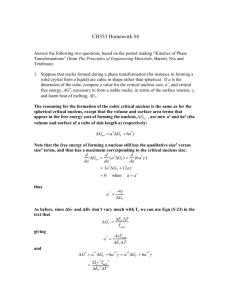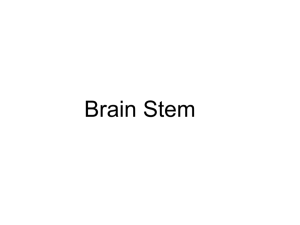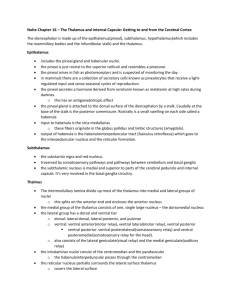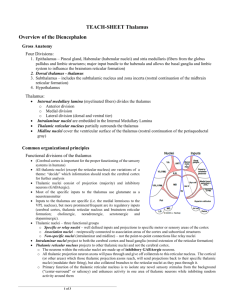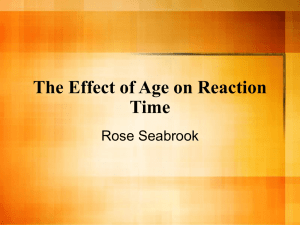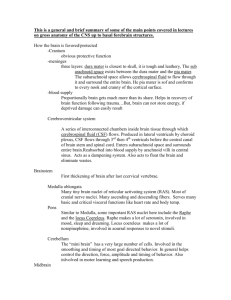nucleus locus
advertisement
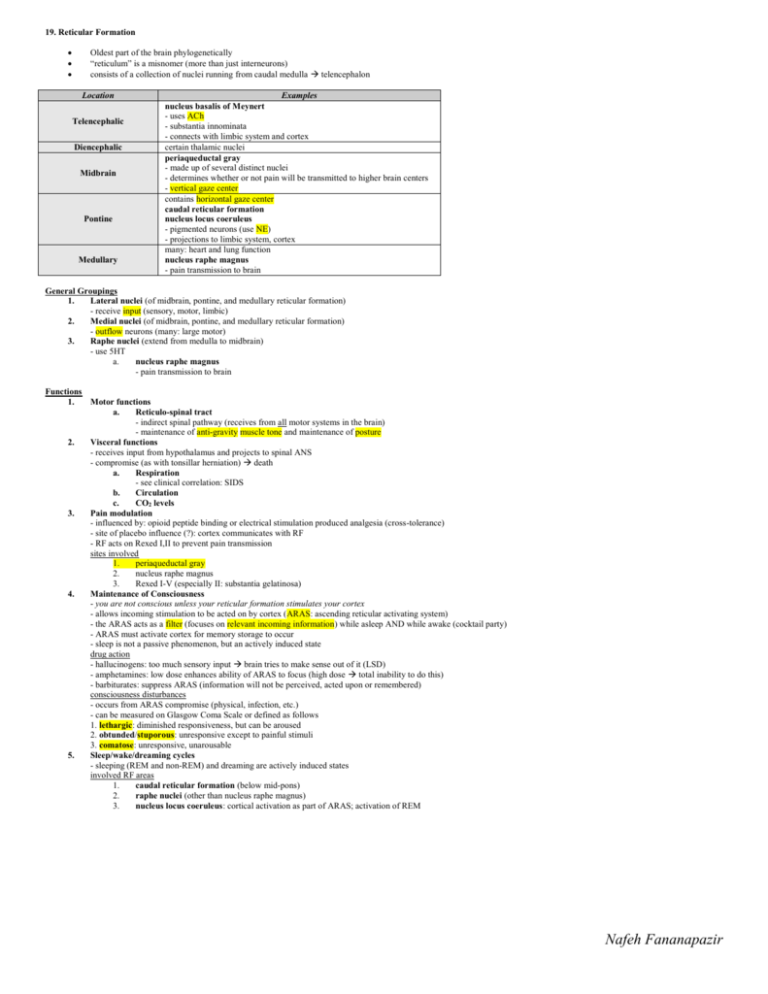
19. Reticular Formation Oldest part of the brain phylogenetically “reticulum” is a misnomer (more than just interneurons) consists of a collection of nuclei running from caudal medulla telencephalon Location Telencephalic Diencephalic Midbrain Pontine Medullary Examples nucleus basalis of Meynert - uses ACh - substantia innominata - connects with limbic system and cortex certain thalamic nuclei periaqueductal gray - made up of several distinct nuclei - determines whether or not pain will be transmitted to higher brain centers - vertical gaze center contains horizontal gaze center caudal reticular formation nucleus locus coeruleus - pigmented neurons (use NE) - projections to limbic system, cortex many: heart and lung function nucleus raphe magnus - pain transmission to brain General Groupings 1. Lateral nuclei (of midbrain, pontine, and medullary reticular formation) - receive input (sensory, motor, limbic) 2. Medial nuclei (of midbrain, pontine, and medullary reticular formation) - outflow neurons (many: large motor) 3. Raphe nuclei (extend from medulla to midbrain) - use 5HT a. nucleus raphe magnus - pain transmission to brain Functions 1. Motor functions a. Reticulo-spinal tract - indirect spinal pathway (receives from all motor systems in the brain) - maintenance of anti-gravity muscle tone and maintenance of posture 2. Visceral functions - receives input from hypothalamus and projects to spinal ANS - compromise (as with tonsillar herniation) death a. Respiration - see clinical correlation: SIDS b. Circulation c. CO2 levels 3. Pain modulation - influenced by: opioid peptide binding or electrical stimulation produced analgesia (cross-tolerance) - site of placebo influence (?): cortex communicates with RF - RF acts on Rexed I,II to prevent pain transmission sites involved 1. periaqueductal gray 2. nucleus raphe magnus 3. Rexed I-V (especially II: substantia gelatinosa) 4. Maintenance of Consciousness - you are not conscious unless your reticular formation stimulates your cortex - allows incoming stimulation to be acted on by cortex (ARAS: ascending reticular activating system) - the ARAS acts as a filter (focuses on relevant incoming information) while asleep AND while awake (cocktail party) - ARAS must activate cortex for memory storage to occur - sleep is not a passive phenomenon, but an actively induced state drug action - hallucinogens: too much sensory input brain tries to make sense out of it (LSD) - amphetamines: low dose enhances ability of ARAS to focus (high dose total inability to do this) - barbiturates: suppress ARAS (information will not be perceived, acted upon or remembered) consciousness disturbances - occurs from ARAS compromise (physical, infection, etc.) - can be measured on Glasgow Coma Scale or defined as follows 1. lethargic: diminished responsiveness, but can be aroused 2. obtunded/stuporous: unresponsive except to painful stimuli 3. comatose: unresponsive, unarousable 5. Sleep/wake/dreaming cycles - sleeping (REM and non-REM) and dreaming are actively induced states involved RF areas 1. caudal reticular formation (below mid-pons) 2. raphe nuclei (other than nucleus raphe magnus) 3. nucleus locus coeruleus: cortical activation as part of ARAS; activation of REM Nafeh Fananapazir


